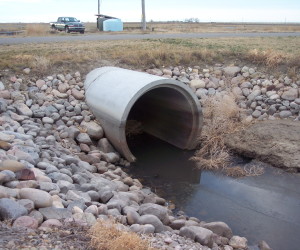Pipe materials are chosen to withstand internal pressures, external loads from backfill and traffic, smoothness, corrosion resistance, chemical inertness, cost, and other factors.
The major types of pipe material that are in use today are:
- Plastic
- Steel
- Concrete
- Copper and brass
- Cast iron
- Vitrified clay
Plastic Pipe
Subdivided into PVC and ABS pipe, plastic pipe is chemically inert, resistant to corrosion, very smooth, lightweight, and low cost.
Steel Pipe
Steel pipe is often used for highway culverts or large pipelines, in corrugated or straight form. It is ductile and resistant to shock, but susceptible to corrosion. An underground pipe should have about 4-5 mm thickness to last about 50 years (although this varies drastically by region).
Concrete
Concrete pipes are generally used for storm sewers and other large diameter applications. They are durable, water-tight, low maintenance, and have a smooth interior wall.
Copper and Brass
Used primarily in water and refrigerant lines, copper and brass is easily bent by hand and has good thermal conductivity.
Cast Iron
Cast iron pipes are strong, impervious, and scour resistant, but are heavy, cannot be bent by hand and are costly compared to copper and brass.
Vitrified Clay
If you need something that is resistant to acid, such as in septic sewage, this is your best bet.

Speak Your Mind